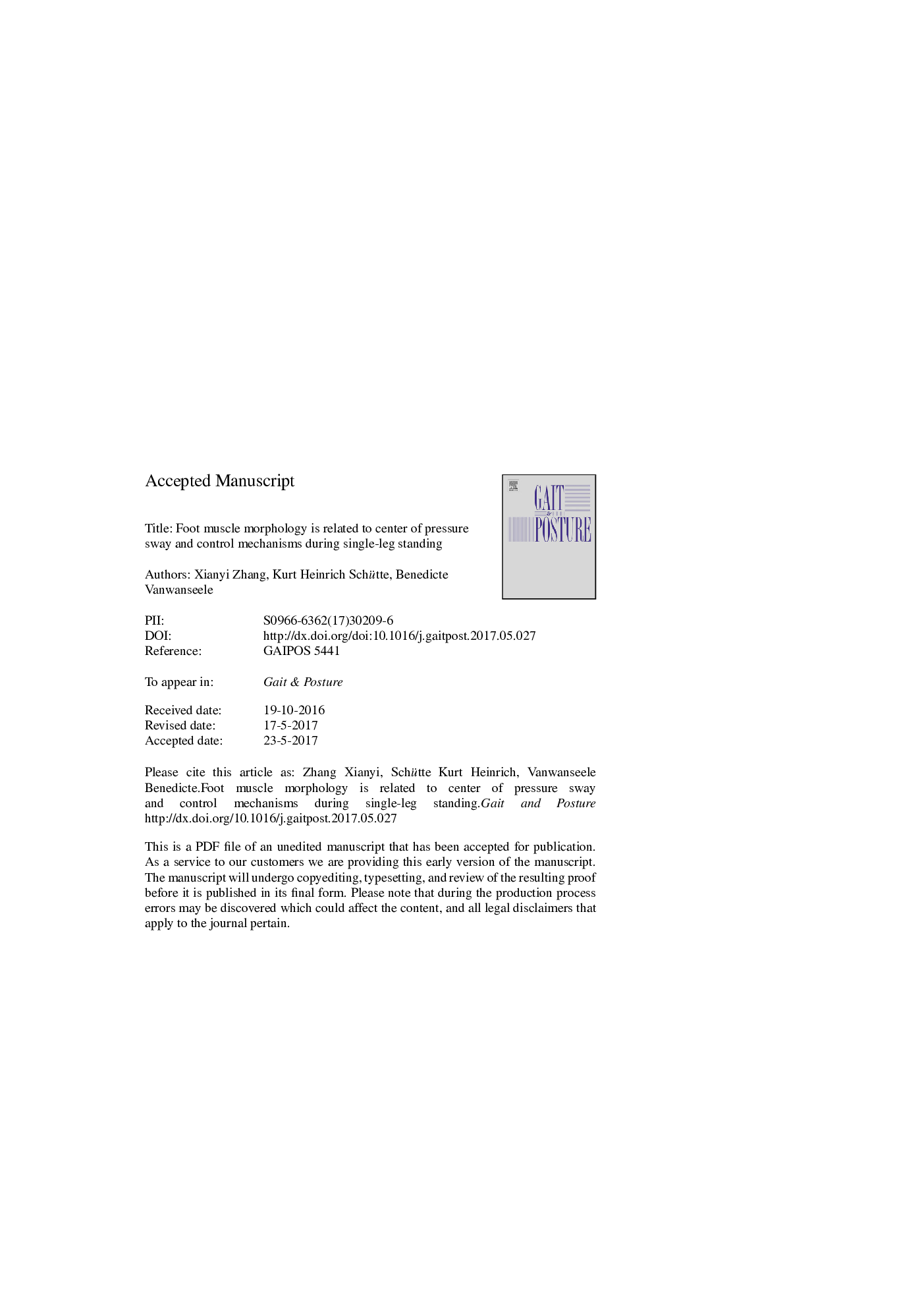| Article ID | Journal | Published Year | Pages | File Type |
|---|---|---|---|---|
| 5707802 | Gait & Posture | 2017 | 18 Pages |
Abstract
Maintaining balance is vitally important in everyday life. Investigating the effects of individual foot muscle morphology on balance may provide insights into neuromuscular balance control mechanisms. This study aimed to examine the correlation between the morphology of foot muscles and balance performance during single-leg standing. Twenty-eight recreational runners were recruited in this study. An ultrasound device was used to measure the thickness and cross-sectional area of three intrinsic foot muscles (abductor hallucis, flexor digitorum brevis and quadratus plantae) and peroneus muscles. Participants were required to perform 30Â s of single-leg standing for three trials on a force plate, which was used to record the center of pressure (COP). The standard deviation of the amplitude and ellipse area of the COP were calculated. In addition, stabilogram diffusion analysis (SDA) was performed on COP data. Pearson correlation coefficients were computed to examine the correlation between foot muscle morphology and traditional COP parameters as well as with SDA parameters. Our results showed that larger abductor hallucis correlated to smaller COP sway, while larger peroneus muscles correlated to larger COP sway during single-leg standing. Larger abductor hallucis also benefited open-loop dynamic stability, as well as supported a more efficient transfer from open-loop to closed loop control mechanisms. These results suggest that the morphology of foot muscles plays an important role in balance performance, and that strengthening the intrinsic foot muscles may be an effective way to improve balance.
Related Topics
Health Sciences
Medicine and Dentistry
Orthopedics, Sports Medicine and Rehabilitation
Authors
Xianyi Zhang, Kurt Heinrich Schütte, Benedicte Vanwanseele,
